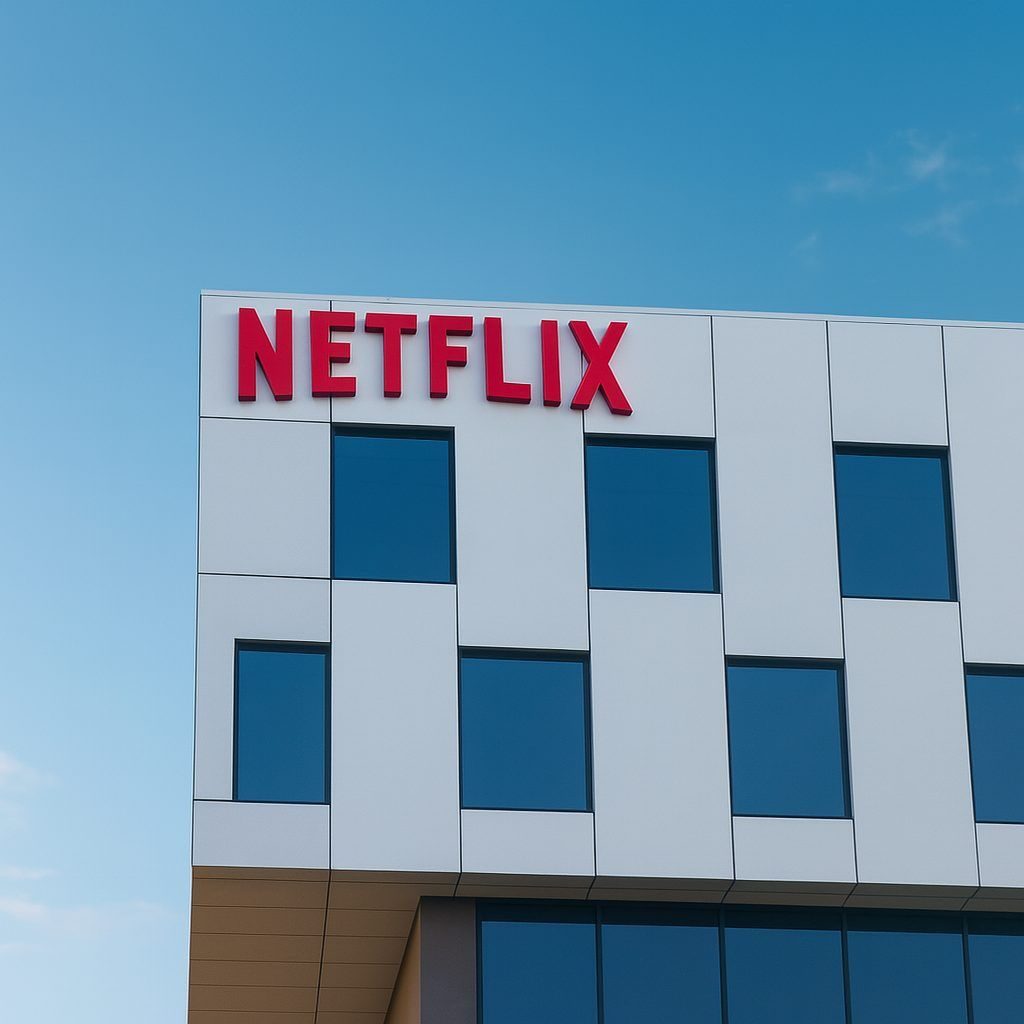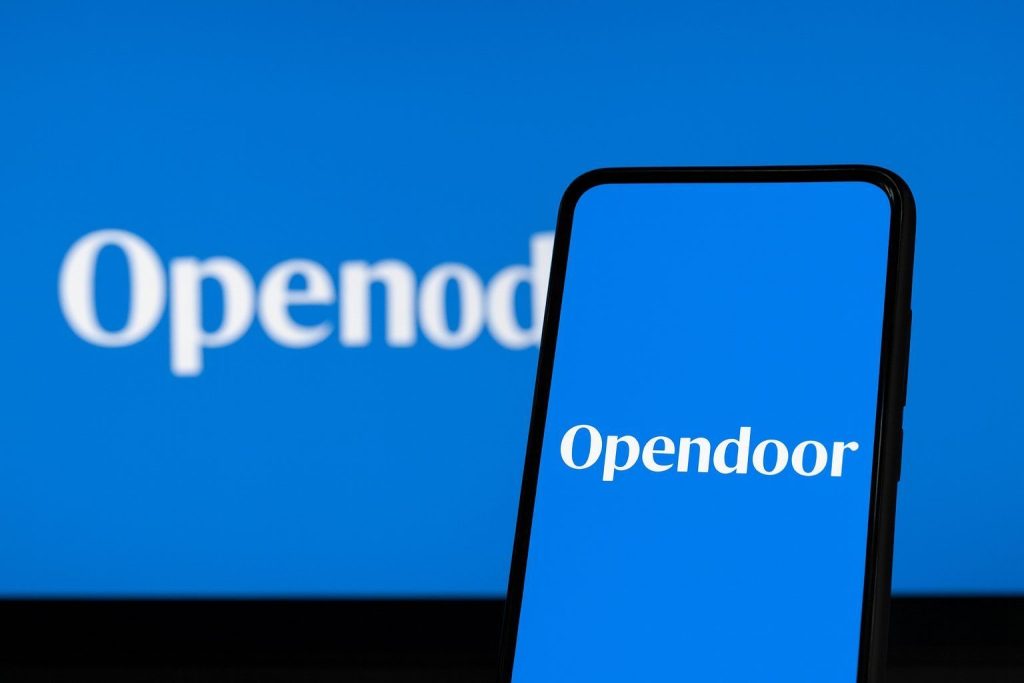Netflix (NASDAQ: NFLX) shares slipped again on Tuesday as investors continued to weigh a messy third‑quarter earnings print, a fresh 10‑for‑1 stock split and big expectations for the streamer’s holiday content slate.
As of the U.S. market close on November 25, 2025, Netflix stock finished at $104.57, down a little more than 2% on the day, after trading between $104.00 and $106.30. That leaves NFLX roughly 22% below its 52‑week high of $134.12, though still well above its 52‑week low of $82.11. The stock now carries an intraday market cap of about $441 billion, with trading volume slightly below its recent 37 million‑share daily average. [1]
Below is a deep dive into what’s driving NFLX today and what investors are watching next.
NFLX Stock Today: Snapshot for November 25, 2025
Key metrics for Netflix at today’s close:
- Closing price: $104.57
- Day move: Down about 2.2% vs. Monday’s close of $106.97
- Intraday range: $104.00 – $106.30
- 52‑week range: $82.11 – $134.12
- Market cap: ≈ $441.5 billion
- Beta (5‑year monthly): Around 1.7, indicating higher volatility than the broader market [2]
Despite today’s pullback, Netflix remains up around 20% year‑to‑date, roughly in line with broader broadcast and TV peers, according to Zacks Investment Research. [3]
From Q3 Earnings Shock to Post‑Split Trading
Today’s action can’t be separated from Netflix’s Q3 2025 earnings and what came after.
Q3 2025: Strong revenue, messy headline EPS
On October 21, 2025, Netflix reported:
- Revenue: $11.51 billion, up about 17% year over year, essentially in line with expectations [4]
- EPS: $5.87, below consensus estimates near $6.9–7.0
- Operating margin: 28%, vs. guidance of 31.5%
The big swing factor: an unexpected $619 million tax charge tied to a long‑running dispute with Brazilian tax authorities, which management said sliced roughly five percentage points off operating margin. [5]
Net income still rose to about $2.5 billion, but the surprise charge broke Netflix’s streak of upside earnings surprises and triggered an immediate sell‑off. Shares dropped 5–10% in after‑hours and subsequent regular trading as investors reset expectations on margins. [6]
Outlook remains growth‑heavy
Despite the earnings miss, Netflix guided to another robust quarter to close 2025:
- Q4 2025 revenue guidance: about $11.96 billion, implying ~17% year‑over‑year growth
- Q4 EPS guidance: around $5.45
- Q4 operating margin: about 23.9%, roughly two points better than last year
- Full‑year 2025 revenue: maintained at $45.1 billion, ~16% growth
- Full‑year operating margin: trimmed to 29%, from a prior 30% target [7]
In other words: the Brazilian tax bill is painful, but management insists it’s a one‑off accounting hit rather than a trend change in the business.
Netflix’s 10‑for‑1 Stock Split: What It Really Changed
Another big factor behind today’s price level is Netflix’s 10‑for‑1 stock split, which brought the triple‑digit stock back into a friendlier trading range.
- Announcement date: October 30, 2025 [8]
- Record date: November 10, 2025
- Distribution: Shareholders received nine additional shares after the close on November 14
- Split‑adjusted trading: Began November 17, 2025 [9]
The company explicitly framed the split as a way to “reset the market price” and make shares more accessible, especially for employees using stock options, without changing the underlying value of the business. [10]
Before the split, NFLX briefly traded above $1,000 per share, with a market cap north of $470 billion and a forward P/E in the mid‑30s. Post‑split, each share now represents one‑tenth the prior claim on earnings, so valuation multiples like P/E and P/S are essentially unchanged, even if the headline price looks cheaper. [11]
Some commentators, including analysts quoted by The Motley Fool, argue that the post‑split slide from roughly $112 to the low‑$100s has not been driven by deteriorating fundamentals, and view the lower price as sentiment‑driven. [12] That said, whether that makes the stock attractive depends entirely on each investor’s risk tolerance and growth assumptions.
Holiday Content Pipeline: Can Netflix Turn Streaming Buzz into Stock Gains?
With Q3 in the rear‑view mirror, near‑term sentiment around NFLX is increasingly tied to its holiday slate and engagement metrics.
Zacks notes that Netflix is projecting about 17% revenue growth in Q4, powered by a combination of member growth, price increases and rising ad revenue. [13] That forecast is anchored by an especially loaded December lineup, including:
- The final season of “Stranger Things”, split between a late‑November drop and a New Year’s Eve finale
- “Wake Up Dead Man: A Knives Out Mystery”, the third installment in the popular film series, debuting in December after strong critical buzz
- New episodes of “Emily in Paris”
- “Troll 2”, a follow‑up to one of Netflix’s biggest non‑English language films [14]
The big question for the stock: Will this content pipeline translate into enough engagement and incremental revenue to offset concerns about margins, taxes and competition? Zacks currently rates NFLX a Rank #3 (Hold), highlighting strong growth but a stretched valuation. [15]
Ad‑Supported Tier and Live Events: Netflix’s New Growth Engines
One reason many analysts remain constructive on Netflix despite recent volatility is that its younger revenue streams are accelerating.
Advertising: “Best quarter ever” and still ramping
Across Netflix’s Q3 commentary and follow‑up analysis, a consistent theme emerged: ads are finally scaling.
- Q3 2025 marked Netflix’s best ad‑sales quarter in company history, with ad revenue on track to more than double in 2025, even if it’s still small relative to subscriptions. [16]
- Management has cited 94 million monthly active users on ad‑supported plans globally, giving advertisers growing reach and frequency. [17]
This matters for NFLX stock because ad‑supported streaming can have higher incremental margins than pure subscription growth. As the ad business matures, it could provide a second leg of growth without relying solely on price hikes.
Live sports and events
Netflix is also leaning into live programming—a genre once dominated by legacy TV:
- A 10‑year deal for WWE Monday Night Raw, which has given Netflix a reliable weekly live anchor [18]
- Two NFL Christmas Day games coming in December 2025, one featuring the Kansas City Chiefs vs. Pittsburgh Steelers, designed to draw massive concurrent audiences [19]
- High‑profile one‑off events, such as a Jake Paul vs. Mike Tyson boxing match that attracted over 100 million viewers, showing live events can spike engagement (and ad revenue) quickly [20]
Live content is expensive, but it helps differentiate Netflix from rivals, reduces churn and gives the ad business more premium inventory.
Password‑Sharing Crackdown: Still Paying Off
Netflix’s controversial password‑sharing crackdown, rolled out globally since 2023, continues to reverberate through its numbers.
Data from MarketWatch and other trackers suggests:
- The crackdown has helped boost Netflix’s subscriber base by nearly 27% to more than 300 million customers globally since launch. [21]
- One third‑party analysis found that immediately after the U.S. rollout in 2023, Netflix logged its four largest single days of U.S. user sign‑ups in four and a half years. [22]
- Subsequent research estimates that Netflix added more than 9 million incremental subscribers in a single stretch linked to the crackdown’s later phases. [23]
For investors, the key takeaway is that Netflix successfully converted many “free riders” into paying accounts, supporting revenue growth, higher average revenue per membership (ARM) and more scale for the ad tier.
How Wall Street Sees Netflix Stock After the Pullback
Analyst sentiment on NFLX is positive but not unanimous, reflecting a classic growth‑at‑a‑price debate.
Fresh calls this week
- On November 19, Morgan Stanley’s Benjamin Swinburne reiterated a Buy rating on Netflix with a $150 price target, implying meaningful upside from today’s levels. He projects about 25% compound annual growth in adjusted EPS through 2028, driven by double‑digit revenue growth and margin expansion. [24]
- A day earlier, J.P. Morgan’s Doug Anmuth reiterated a Hold/Neutral stance while trimming his target from $127.50 to $124, citing near‑term pressure after the Q3 miss, even as long‑term fundamentals remain intact. [25]
Zacks, meanwhile, projects 2025 revenue of roughly $45.1 billion and split‑adjusted EPS of around $2.53, implying about 15–16% revenue growth and roughly 27–28% earnings growth versus 2024. [26]
Valuation: Still a premium story
Even after the recent slide, NFLX trades at:
- A forward price‑to‑sales multiple around 9x, more than double the average for the broadcast and TV industry
- A forward P/E near the mid‑30s and a trailing P/E above 40x, depending on the specific data provider [27]
Zacks assigns Netflix a Value Score of “D” and a Rank #3 (Hold), essentially saying that while growth is compelling, much of that future upside is already reflected in the current valuation. [28]
Strategy, M&A and AI: Longer‑Term Storylines
Beyond quarterly numbers, several strategic themes color how investors think about NFLX today.
Potential Warner Bros/Max bid
Reporting highlighted by Insider Monkey and The Wall Street Journal suggests Netflix is competing with Comcast in a potential bid for Warner Bros’ film and TV studios and the Max streaming service. [29]
Such a deal could:
- Deepen Netflix’s content library and bolster its position in franchises and film
- Create regulatory complexity and potential dilution to free‑cash‑flow per share
- Further raise questions about how far Netflix wants to move from a pure‑play streamer into a broader media conglomerate
No deal has been announced, but even speculation about major M&A tends to influence sentiment for high‑multiple growth stocks like NFLX.
AI as both cost saver and product enhancer
Netflix is also leaning heavily into generative AI across its business:
- In production, AI‑assisted visual effects on projects like Argentine sci‑fi series “The Eternaut” have reportedly cut time and costs by an order of magnitude. [30]
- On the product side, Netflix is testing AI‑enhanced recommendations and ad targeting, as well as internal tools to automate ad creative and media planning. [31]
For investors, AI is less about Netflix building the next mega‑model and more about incremental margin expansion and engagement gains over time.
Competitive and Macro Risks
Even with strong fundamentals, several risks hang over Netflix stock:
- Intensifying competition: Disney+, Amazon Prime Video and other rivals are all ramping holiday slates and ad tiers, forcing Netflix to keep spending aggressively just to maintain share. [32]
- Content and rights inflation: Premium series, live sports and major film franchises continue to command higher budgets, pressuring margins if revenue growth ever slows. [33]
- Regulatory & tax overhangs: The Brazilian tax dispute is a reminder that international tax regimes can chew into profits unexpectedly. [34]
- Potential large‑scale M&A: Acquiring major assets like Warner Bros and Max would alter Netflix’s risk profile and could invite regulatory scrutiny. [35]
These factors help explain why the market can be quick to punish any hint of earnings volatility, even when top‑line growth remains strong.
Bottom Line on NFLX Stock for November 25, 2025
On November 25, 2025, Netflix stock sits at just over $104 per share, post‑split, well below its recent high but still commanding a premium growth valuation.
- The core business is growing: revenue up ~17%, ad sales surging, and a larger‑than‑ever global member base. [36]
- The headline earnings stumble in Q3 stemmed mostly from a one‑time Brazilian tax charge, though investors are rightfully watching margins more closely. [37]
- The holiday content slate, ad‑tier ramp and live sports experiments are the next key catalysts that could influence sentiment in the coming weeks. [38]
- Wall Street is generally constructive but split on valuation, with targets and ratings ranging from Hold to Buy and expectations for high‑teens revenue and mid‑20s EPS growth through the latter half of the decade. [39]
For current and prospective shareholders, the decision around NFLX boils down to a simple but difficult question:
Does Netflix’s combination of global scale, ad growth, password‑sharing tailwinds and premium content justify paying a high‑30s multiple for earnings that are still exposed to tax, regulatory and competitive shocks?
That’s ultimately a personal risk‑reward call. What’s clear today is that NFLX remains one of the most closely watched and hotly debated growth stocks on the market.
This article is for informational purposes only and does not constitute financial, investment or tax advice. Always do your own research or consult a licensed financial professional before making investment decisions.
References
1. finance.yahoo.com, 2. finance.yahoo.com, 3. www.nasdaq.com, 4. www.nasdaq.com, 5. www.nasdaq.com, 6. www.reuters.com, 7. www.nasdaq.com, 8. ir.netflix.net, 9. ir.netflix.net, 10. ir.netflix.net, 11. coincentral.com, 12. www.nasdaq.com, 13. www.nasdaq.com, 14. www.nasdaq.com, 15. www.nasdaq.com, 16. ppc.land, 17. www.nasdaq.com, 18. www.nasdaq.com, 19. www.nasdaq.com, 20. www.nasdaq.com, 21. www.marketwatch.com, 22. www.antenna.live, 23. www.demandsage.com, 24. www.insidermonkey.com, 25. www.insidermonkey.com, 26. www.nasdaq.com, 27. www.nasdaq.com, 28. www.nasdaq.com, 29. www.insidermonkey.com, 30. www.nasdaq.com, 31. www.marketingbrew.com, 32. www.nasdaq.com, 33. coincentral.com, 34. www.reuters.com, 35. www.insidermonkey.com, 36. www.reuters.com, 37. www.reuters.com, 38. www.nasdaq.com, 39. www.insidermonkey.com







